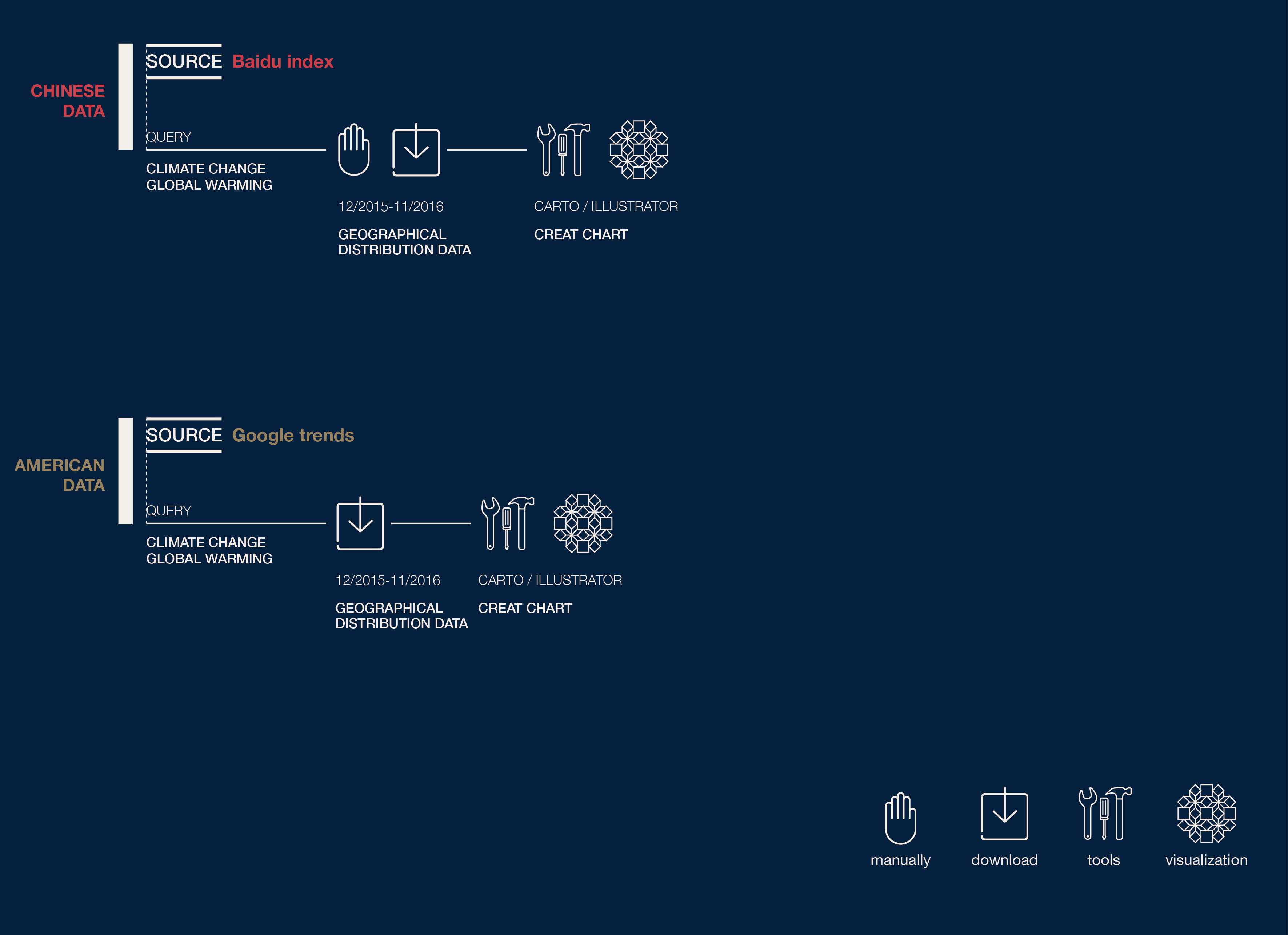Description
In this section, we want to analyze the geographical distribution of the searchers in China and the United States, because both of these two countries have vast geopolitical, the natural environment varies widely among different regions of the countries. Therefore, it is meaningful to analyze the search degree of climate change by region. It can tell us which areas are more concerned about climate change, which often means that these areas are more affected by climate change, or the regional events on climate change were taken place in this areas during this time. And we can also make a comparison between China and American to see if there is some geographical factors which will influence the searching degree of climate change.
Through this chart we find that both in China and the United States, coastal areas and economically developed areas have a high searching degree in climate change. In both countries, the regions with the highest degree of search are administrative capitals, indicating that climate change search is likely to be affected by political or policy implications.




